Super 60: Blast Motion identifies its statistical stand-outs
February 14, 2023
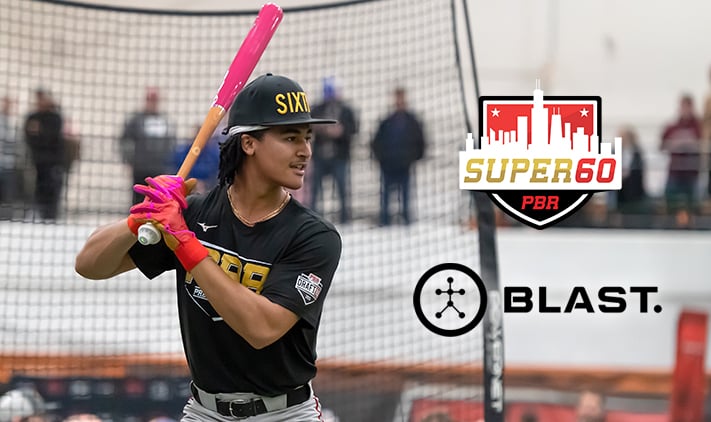
At Blast Motion, when we do player evaluations, we bucket the individual metrics into a Power Profile, Contact Profile, and Swing Consistency Profile.
Below is 1) an explanation of each profile and 2) our top performers for each profile from the Super 60 (based on their Blast Metrics and Super 60 performance).
These Blast Motion profile rankings were put together with the player’s future value in mind, not necessarily how good they are right now.
POWER PROFILE
For the Power Profile, we’re looking for dynamic power, not necessarily raw strength. For this, we look at Bat Speed and Rotational Acceleration.
Bat Speed measures the peak speed of the barrel at impact (the value is self-explanatory).
Rotational Acceleration is how quickly the bat accelerates into that peak bat speed. So, the higher the RA, the quicker the hitter can reach their peak bat speed in their swing - this means the hitter sequences their body well and is equipped to make later decisions at the plate.
Bat Speed = How strong the hitter currently is.
Rotational Acceleration = How effective the hitter is at using that strength.
Important Note: We generally tend to see guys struggle by the time they get to High-A or Double-A if they don’t have at least an average of 14 gs in Rotational Acceleration. This isn’t the case for every player, but from what we see, it’s the case for most.
Another Important Note: From what we’ve seen, you don’t necessarily need to have a high Rotational Acceleration to be the best player in high school, college, or even low parts of minor league baseball. High Bat Speed is enough of a tool (in terms of power) to succeed at those levels.
Here is an example of A-Rod displaying where Rotational Acceleration is measured in the swing:
2023 Super 60 Top-10 Power Profiles
| 1 | Nazzan Zanetello (MO) | 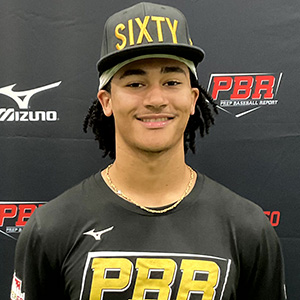 |
SS/OF | 76.4 mph | 24.2g |
| 2 | Sam Harris (IA) | 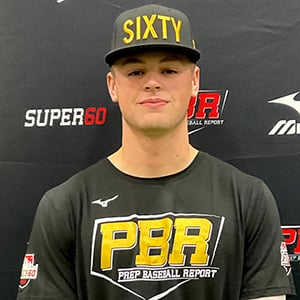 |
1B/OF | 78.6 mph | 23.9g |
| 3 | Chase Krewson (PA) | 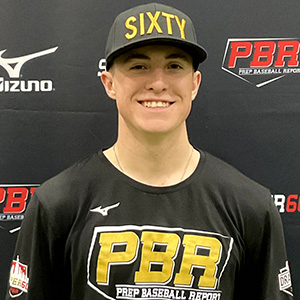 |
OF | 75.3 mph | 25.9g |
| 4 | Avery Ortiz (OK) | 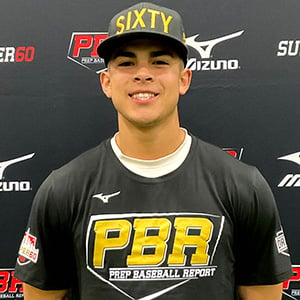 |
SS | 75.3 mph | 18.2g |
| 5 | Colin Barczi (IL) | 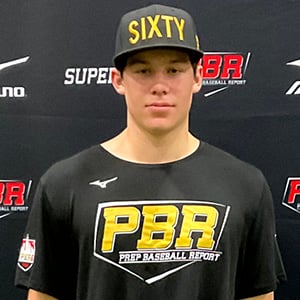 |
C | 75.3 mph | 19.6g |
| 6 | Parker Picot (MI) | 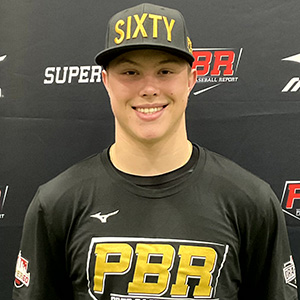 |
OF | 75.9 mph | 23.4g |
| 7 | Cal Sefcik (IL) | 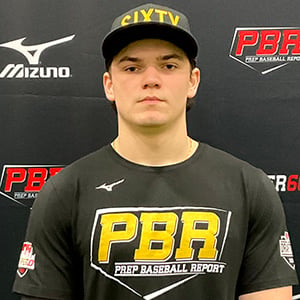 |
SS/3B | 74.9 mph | 23.5g |
| 8 | Caden Sorrell (TX) | 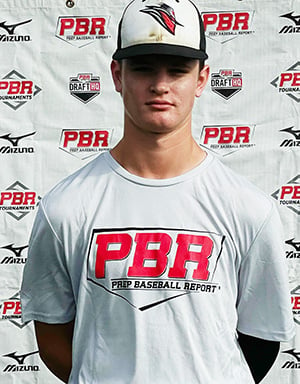 |
OF | 74.5 mph | 17.0g |
| 9 | Jarren Advincula (CA) |  |
SS | 70.3 mph | 24.7g |
| 10 | Evan Haeger (MI) | 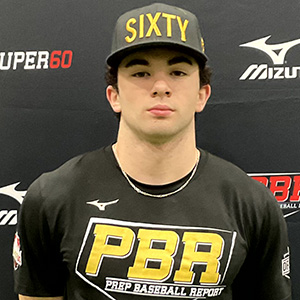 |
OF | 73.1 mph | 19.6g |
CONTACT PROFILE
For the Contact Profile, we look at On-Plane Efficiency and Attack Angle.
On-Plane Efficiency is the swing’s path, which should match the plane of the pitch location. The goal for a hitter should be 70% and above for On-Plane Efficiency. This shows that the swing path is effective for making contact and also displays an ability to make adjustments when needed.
The Attack Angle is the angle that the barrel approaches the ball at impact. We look at Attack Angle as the direction of the swing. When the pitcher throws a pitch, the ball travels at a downward angle toward home plate. Hitters want to have the direction of their swing slightly positive (up) to match the incoming pitch. For this, we’re looking for a range of +5° to +25° as the target.
In-range On-Plane + In-range Attack Angle = Higher Chance of Contact (granted they have the prerequisite bat speed).
Here is a visual of the relationship between OPE and AA (the swing on the left has a much higher % of contact than the one on the right):
2023 Super 60 Top-10 Contact Profiles
| 1 | Jeremy Comer (KS) | 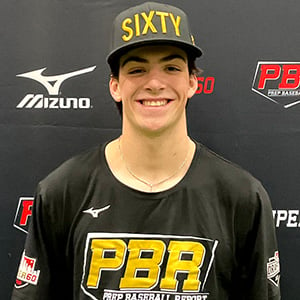 |
OF | 94% | 13 degrees |
| 2 | Chase Krewson (PA) |  |
OF | 92% | 9 degrees |
| 3 | Cal Sefcik (IL) |  |
SS/3B | 89% | 13 degrees |
| 4 | Eli Small (NE) | 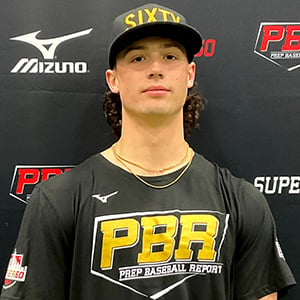 |
C | 87% | 19 degrees |
| 5 | Avery Ortiz (OK) |  |
SS | 86% | 7 degrees |
| 6 | Luke Vaughn (OH) | 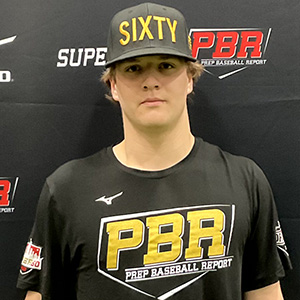 |
C | 86% | 18 degrees |
| 7 | Adam Agresti (NY) | 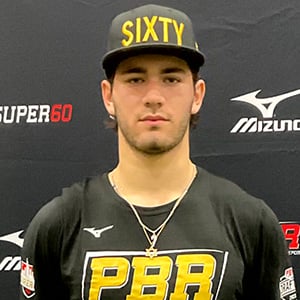 |
C | 84% | 24 degrees |
| 8 | George Wolkow (IL) | 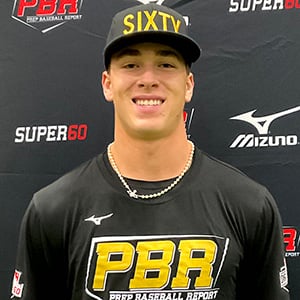 |
3B/OF | 81% | 15 degrees |
| 9 | Ryder Robinson (UT) | 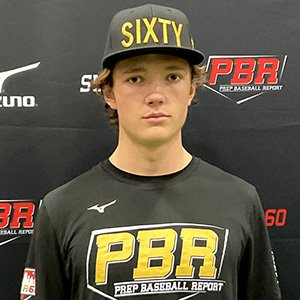 |
SS | 80% | 10 degrees |
| 10 | Carl Schmidt (CA) | 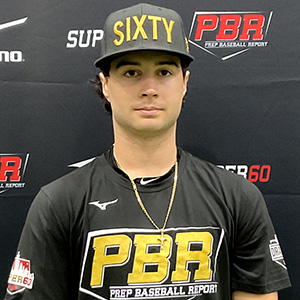 |
SS | 80% | 22 degrees |
swing CONSiStency PROFILE
For the consistency profile, we’re looking for repeatability of strong positions in the load and contact position. For this, we look at Early Connection and Connection at Impact.
Early Connection measures the relationship between your torso and the bat when the hitter initiates rotation in the swing. It’s measured at the beginning of the violent part of the swing (start of the downswing).
The desired range for Early Connection is between 80 - 105 degrees.
An average range of 80 - 105 degrees for Early Connection highlights a consistent load in the swing, which is critical for success against professional level pitching.
Connection at Impact measures the relationship between your torso and bat at impact.
The desired range for Connection at Impact is between 80 - 95 degrees.
An average range of 80 - 95 degrees for Connection at Impact highlights the hitter’s ability to adjust using their bigger muscles (core) instead of reaching with their hands and arms.
The hitter’s desired goal for Early Connection and Connection at Impact is to be 1) consistent and 2) as close to 90 degrees as possible (an average of 90 degrees is very challenging).
In-Range Early Connection (80 - 105 degrees) + In-Range Connection at Impact (90 - 95 degrees) = Low Maintenance Swing.
Here is a good visual of Trout’s Early Connection and Connection at Impact. Note his torso adjusting to the pitch location instead of just reaching with his hands.
2023 Super 60 Notable Swing Consistency Profiles
| Jarren Advincula (CA) |  |
SS | 95 degrees | 84 degrees |
| Amari Allen (MD) |  |
LHP/1B | 105 degrees | 88 degrees |
| Drew Burress (GA) | 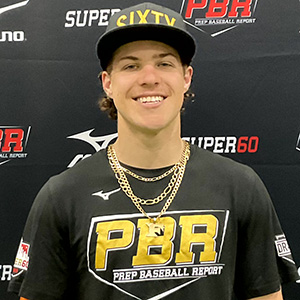 |
OF/3B | 90 degrees | 84 degrees |
| Cole Eaton (NE) |  |
OF | 98 degrees | 82 degrees |
| Jaxon Goldberg (KS) | 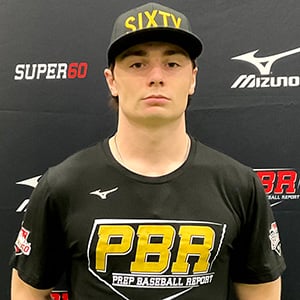 |
SS | 90 degrees | 80 degrees |
| Sam Harris (IA) |  |
1B/OF | 92 degrees | 83 degrees |
| Kyle Johnson (VA) | 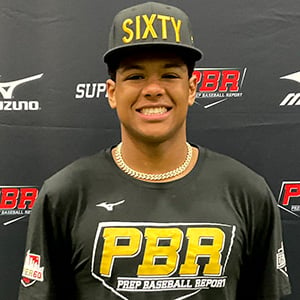 |
OF /LHP | 99 degrees | 81 degrees |
| Chase Krewson (PA) |  |
OF | 83 degrees | 80 degrees |
| Avery Ortiz (OK) |  |
SS | 94 degrees | 80 degrees |
| Parker Picot (MI) |  |
OF | 90 degrees | 87 degrees |
| Brett Renfrow (VA) | 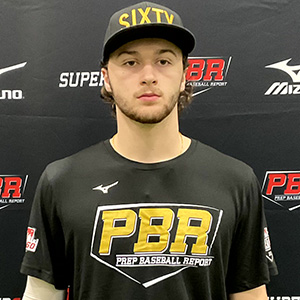 ; ; |
OF | 97 degrees | 81 degrees |
| Ryder Robinson (UT) |  |
SS | 84 degrees | 80 degrees |
| Carson Rucker (TN) |  |
SS/3B | 84 degrees | 81 degrees |
| Cal Sefcik (IL) |  |
SS/3B | 86 degrees | 84 degrees |
| Luke Stevenson (NC) | 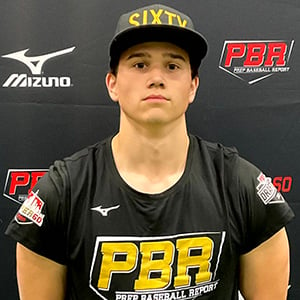 |
C | 102 degrees | 86 degrees |
